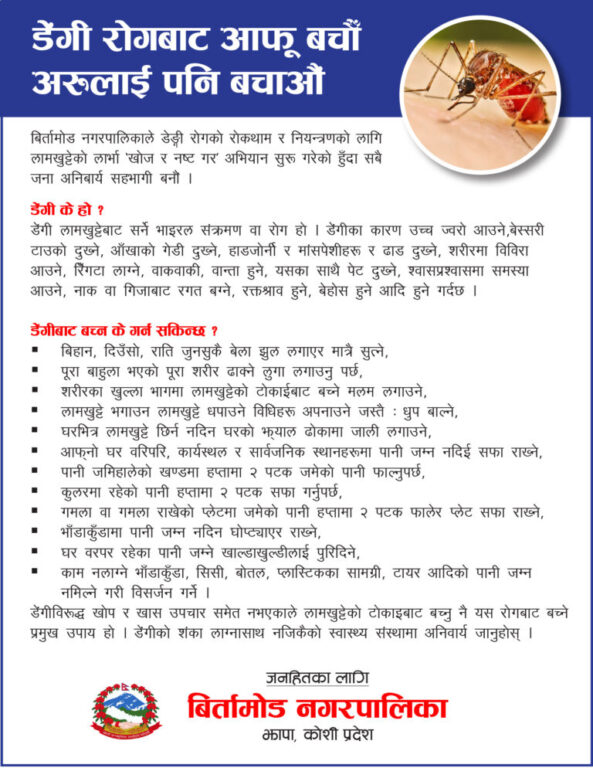Lakshmi Prasad Adhikari
Abstract
Poverty is a multi-dimensional and complex problem. The causes of poverty by analyzing different aspects of income and human poverty are not only economic but also social and technological backwardness too. One of the main causes of poverty is low economic growth rate. The stock taking of economic achievement of last three decades shows a lower economic growth rate of approximately 4 percent while annual population growth rate was about 2.5 percent. The per capita income growth rate at a very low level could not contribute to mitigate poverty significantly. The economic growth rate in Nepal is not only very low but its annual variation is also very high. The main reason behind such variation of high degree has been the dependence on agriculture. Still agriculture in Nepal depends on monsoon. There is no noticeable implement in rural poverty because of low agricultural growth rate and monsoon variation. There is significant contribution of non agriculture sector in the growth rate of GDP, but its impact is limited to urban areas but it has not affected the rural areas where majority of poor live. PAF is aimed to empower the socially excluded and disadvantaged poor households. It provides them the avenues for changing from” dependency” to “independency” and to “interdependent” level in relationship with traditionally dominant elite of the society and thus empower the poor to become part of the mainstream of development. This research is done in the contemporary issue related to the PAF. Impact of PAF programme in Sunarpani VDC, of Ramechhap District. In various parts of the country PAF has been working as a close partnership for the local peoples. It is trying to develop the disadvantage, disable, women,Janajati empowerment, income generation, social mobilization and capacity building. This study focuses in the developmental process, affecting factors relation to socio-cultural activities done by PAF in Sunarpani VDC.
INTRODUCTION
Nepal is a landlocked country which covers 1, 47,181 square km area of the world. It is located in the central Himalayas between India and China. The country boarders India in the east, south, west and China in the north. So, Nepal is defined as “Yam between two stones”, where above 80 percent people are living in rural areas. It is one of the least developed countries of the world but it is very rich in terms of resources and biodiversity. It is divided into the three ecological regions i.e. Terai, Hill and Mountain according to the ecological zones where Terai covers 17 percent, Hill covers 68 percent and Mountain covers 15 percent of the total land. Low fertile land, high population growth rate, low economic growth rate, subsistence farming system, fragile topographic structure etc are the main characteristics of this country which are the causes of poverty too. Lack of basic human needs, lack of development infrastructures, lack of participatory community development programs, and lack of inclusive and disadvantages groups oriented programs has raised the poverty level day by day in this country which is the main limitation and reality of our long term and short term development plans. There is also an increasing trend of population. The total population and population growth rate is about 26.4 million and 2.25 percent per year where 86.1 percent of people live in the rural areas. There is a big disparity between rural and urban area in many context. The poverty situation of the country is remained about 31.8 percent after finished the Tenth five year plan period where large number of rural people suffered from this poverty.
There are uncountable discrimination between men and woman. The constitution of Nepal, 1990 states that “NO discrimination shall be made against any citizen in the application of general laws on grounds of religion race, sex, caste, tribe or ideological conviction or any of these” but in reality this has not been practiced. However, this dissemination exists in high degree in rural settlement compared to urban. So, it is necessary to educate rural women first. We should make then capable of standing on their feet which means make them economically sound. Different type of income generating programme can be implemented or in other word, it is necessary to empower women.
Statement of the problem
Poverty is a situation of lack of basic needs of the human being. In other words, poverty means being poor that is, having little or no money. It is not a crime but it is the lack of own necessities and opportunities. “Poverty is greater than death because it is creating death nearly”. It is a multidimensional concept comprising the notion exclusion, difficult or denied access to; information/resources, choice and services, deprivation of basic rights and security and powerlessness. In general, poor people whose great potential to contribute to progress and growth of the nation is not utilized. It is a situation where a population or selection of population is able to meet only its bare subsistence essentials of food, clothing and shelter in order to maintain minimum level of living.
Poverty in Nepal
Nepal is a mountainous Himalayan country, having population density of 158-persons/square kilometer of area 147,181 km square. Nepal is a multi-ethnic and multi-lingual society. It is predominantly rural with only 14 percent of her population living in urban areas and it is one of the least urbanized countries in the world (Aryal, 2002). The basic amenities of life is highly urban-biased and around 80 percent of all urban household have access to electricity for lighting whereas less than 10 percent rural household enjoying it. Nepal is one of the poorest countries in the world and the annual per capita income is around US$240 (NHDR, 2004). Economy and employment depend heavily on agriculture. Agriculture is the main source of economic activity where more than 80 percent of the nation’s labour force involve on it. Over 60 percent of household income comes from agriculture (Chhetry, 2003). Nepal also has five development regions. Each development region is a narrow strip of land stretching from north to south. Each development region includes the three ecological regions. Several development indicators have persistently shown that the Eastern, Central and Western regions are relatively better off than the Mid-western and Far-western development regions (ICIMOD, 1997).
In Nepal poverty incidence profile was not a long history. Initially in 1976/77, National Planning Commission conducted the National Survey on Employment, Income and Consumption. The poverty level has been quantified with the help of minimum subsistence level of income and consumption. About 33 percent populations were below the prescribed poverty lines in 1983 (NPC, 1983). World Bank (WB) conducted a series of poverty survey and reported that 70 percent in 1992 and 53.1 percent in 1997 populations were below the poverty line. Nepal Rastra Bank (NRB) conducted Multiple Household Survey in 1984 and reported that 41.1 percent populations were below the poverty line of which about 43 percent in rural and 39 percent in urban areas (NRB, 1998). In the Ninth Five Years Plan (1997-2002), 42 percent were below the poverty line estimated from Nepal Living Standard Survey 1996 data (CBS, 1996). In Tenth Five Years Plan (2002-2007), 38 percent were living below the nationally prescribed poverty line in 1999. Nepal Living Standard Survey 2003/04 estimated that 31 percent populations were below the poverty line.
Findings of the Study
The study was focused the PAF programme and the socio-cultural development of households of selected sample before and after handover and impact of PAF on the livelihood and local development activities. Out of 2440 population, 50 populations (purposive sampling) had been selected from Sunarpani VDCs of Ramechhap district. Sunarpani VDCs people had been selected to examine the objectives which are related to the socio-economic condition of the HHs and the availability of PAF programme on quality and coverage which impacts in local development situation. In total 50 persons of the HHs had been examined during the study by using purposive sampling. The Summary of the findings are highlighted as below;
Among the sampled households, 66 percent of them had got Kachhi house pattern but 34 percent were in the process of making Pakki house and it was growing orderly. After formation of COs and Pos, majority households were changed slowly.
Out of total respondents, majority of respondents reported that they used poverty related programmes as mouth talk before PAF. After PAF formation; this types of thinkers were decreased and organized for the community affairs for poverty reduction.
Only few of the respondents gave the negative attitude of PAF but mass respondents told the positive attitude and works done by PAF in the study area. Nevertheless, the condition after PAF is being increased and improved and numerous benefits have been gifted to socio-cultural change of Sunarpani VDC’s households and local environment.
After the emergence of PAF, total developmental outcomes achieved by local communities were as social, economic, infrastructure, capacity building and ecological respectively.
Sufficient management and protection of PAF is for sustainable development and poverty reduction, which shows the programme “Garibiko Pahichan”, which programme had helped to empower the local people in income generation.
In conclusion, PAF was trying to change the rural poverty with urban facilities. This example you have seen also in Sunarpani VDC.
REFERENCES
Adhikari, S.P, (1982). Rural Development in Nepal, Problems and Perpestive, Sajha Prakashan, Lalitpur.
Aryal, T.R. (2002). Some demographic models and their applications with reference to Nepal, Ph.D. thesis, Unpublished, BHU, India.
Birdsall, N. et al. (2001). Population Matters: Demographic Change, Economic Growth, and Poverty in the Developing World, New York: Oxford University Press.
Dodson, F. A. (2005). Reducing Poverty on a Global Scale, (Blanca. Moreno-Dodson, Ed.) World Bank, Washington DC.
KC, K.B., (1999). Community Development, Social Service study center, Jhamshikhel, Lalitpur.
Thing, BK. (2004). The Socio-Economic Impact of Community Development and Health Project: A Case Study of Manthali VDC, Makwapur District, Nepal.





